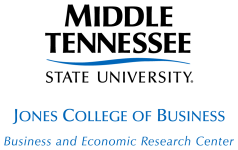Community Facilities Direct Loan and Grant
This program provides affordable funding to develop essential community facilities in rural areas. An essential community facility is defined as a facility that provides an essential service to the local community for the orderly development of the community in a primarily rural area, and does not include private, commercial, or business undertakings.
Please read all the necessary documents/requirements below
Eligible Borrowers
- Public bodies
- Community-based non-profit corporations
- Federally recognized tribes
Legal Requirement
Applicants must have legal authority to borrow money, obtain security, repay loans, construct, operate, and maintain the proposed facilities.
Credit Requirement
Applicants must have the legal authority to borrow money, obtain security, repay loans, construct, operate, and maintain the proposed facilities.
Facility Requirement
Facilities must serve rural area where they are/will be located.
Local Support Requirement
Project must demonstrate substantial community support. An example of this can be shown in Tab E of the Application Package. This document must be signed by a local official.
Environmental Requirement
Environmental review must be completed/acceptable.
Applicant Requirement
Applicants must be eligible for grant assistance, which is provided on a graduated scale with smaller communities with the lowest median household income being eligible for projects with a higher proportion of grant funds. Grant assistance is limited to the following percentages of eligible project costs:
A. Maximum of 75 percent when the proposed project is:
- Located in a rural community having a population of 5,000 or fewer; and
- The median household income of the proposed service are is below the higher of the poverty line or 60 percent of the State nonmetropolitan median household income.
- Located in a rural community having a population of 12,000 or fewer; and
- The median household income of the proposed service are is below the higher of the poverty line or 60 percent of the State nonmetropolitan median household income.
- Located in a rural community having a population of 20,000 or fewer; and
- The median household income of the proposed service are is below the higher of the poverty line or 80 percent of the State nonmetropolitan median household income.
- Located in a rural community having a population of 20,000 or fewer; and
- The median household income of the proposed service are is below the higher of the poverty line or 90 percent of the State nonmetropolitan median household income.
Funding Requirement
Funds must be used to purchase, construct, and / or improve essential community facilities, purchase equipment and pay related project expenses.
Examples of Essential Community Facilities Include:
- Health care facilities such as hospitals, medical clinics, dental clinics, nursing homes or assisted living facilities
- Public facilities such as town halls, courthouses, airport hangars or street improvements
- Community support services such as childcare centers, community centers, fairgrounds or transitional housing
- Public safety services such as fire departments, police stations, prisons, police vehicles, fire trucks, public works vehicles or equipment
- Educational services such as museums, libraries or private schools
- Utility services such as telemedicine or distance learning equipment
- Local food systems such as community gardens, food pantries, community kitchens, food banks, food hubs or greenhouses
National Architect Requirements
Applicants, at the earliest possible time, should be provide a Preliminary Architectural Feasibility Report, including the Cost Estimate, for the review by the RD Area Loan Specialist and RD State Architect. These two documents are needed to determine the project’s feasibility. RD’s State Architect will evaluate and provide architectural/construction guidance to the Applicants and their Architects, for RD financed architectural projects in the following areas:
- Initial site visit & evaluation of the proposed project
- Preliminary Architectural Feasibility Report
- Agency concurrence of Owner/Architect Agreements
- Agency acceptance of Plans & Specifications
- Agency concurrence of Construction Contract documents
- Construction & construction monitoring

